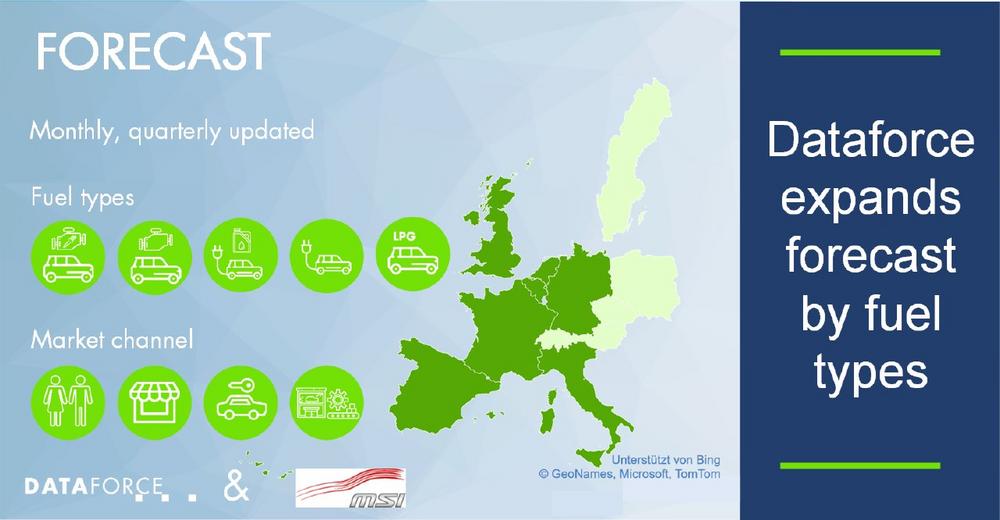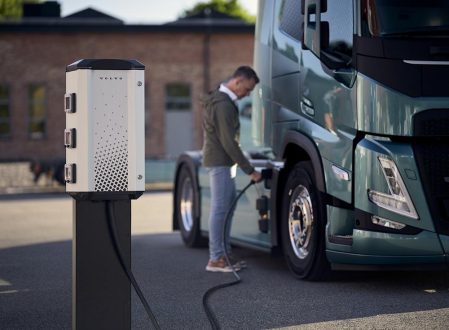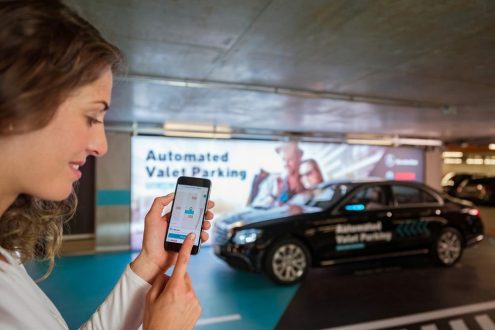
Dataforce expands forecast by fuel types
What drives the European fuel type mix in the next five years?
A decade after the first mass produced electric vehicles entered the market, the European passenger car market is experiencing a transformation. The classification as “alternative” no longer fits the significance of electric vehicles in the market. They have become a common alternative and in some countries have already surpassed other powertrains. By 2040, they will dominate the market in Europe. But what about the short- and medium-term forecast until 2026?
In cooperation with the Spanish forecasting specialists from MSI Sistemas de Inteligencia de Mercado and the renowned industry expert Detlef Borscheid, Dataforce has integrated a fuel type forecast into its market segment forecast. The forecast considers long-term trends such as technical progress in battery development, as well as persistent changes in the regulatory framework. In the medium term, government subsidies and tax changes, among other things, influence fuel choice. In the short term, factors such as pull-forward effects or current production bottlenecks are taken in account.
Forecast Scope
All forecasts stretch five years into the future and can be delivered as a commented report, online dashboard, or data file. At launch at the end of July, seven countries are included in the forecast. These are Germany, France, Italy, Spain, and the UK, as well as Belgium and the Netherlands. In the second half of the year, forecasts for Europe as a whole, Switzerland and Poland will be added, followed in by Austria, Sweden and the Czech Republic in 2022. As before, Dataforce breaks down the market channels into private, true fleet, short-term rental (RAC) and manufacturer/dealer. A new addition, however, is the breakdown by fuel types: petrol, diesel, hybrid, plug-in hybrid, electric and CNG/LPG.
No uniform ramp-up of the EVs
Overall, the share of BEVs and PHEVs will continue to grow strongly in 2021 and 2022. Then, without new stimulus, there will be temporary market saturation. Incentives reach a plateau while the tailwinds from new model introductions dwindle once a range of EVs is available in every vehicle segment.
By the middle of the decade, electrification gains momentum again. Economies of scale and further technical development are lowering the costs of BEVs, while Euro 7 implementation is going to add costs to combustion vehicles. Together with the even lower CO2 targets, the focus of manufacturers is shifting more and more towards electric cars.
However, it is also important to look at individual countries and sales channels. For example, the electrification of rental vehicles can only take off when the public charging infrastructure is much more widely developed. On the other hand, the fiscal framework conditions in the Dutch and Belgian fleet markets ensure that petrol and diesel cars are only purchased for very narrowly defined purposes.
Please find additional information on the fuel type forecast at: https://www.dataforce.de/…
Dataforce is the leading provider of fleet market data and automotive intelligence solutions in Europe. In addition, the company also provides detailed information on sales opportunities for the automotive industry, together with a wide portfolio of information based on primary market research and consulting services. The company is based in Frankfurt, Germany.
Dataforce Verlagsgesellschaft für Business Informationen mbH
Hamburger Allee 14
60486 Frankfurt am Main
Telefon: +49 (69) 95930-0
Telefax: +49 (69) 95930-333
http://www.dataforce.de
Kontakt für Presse
Telefon: +49 (69) 95930-232
Fax: +49 (69) 95930-333
E-Mail: Benjamin.Kibies@dataforce.de
![]()





